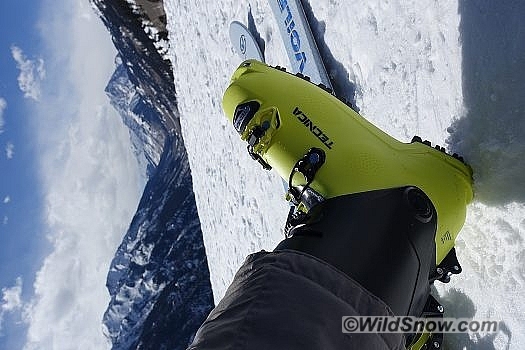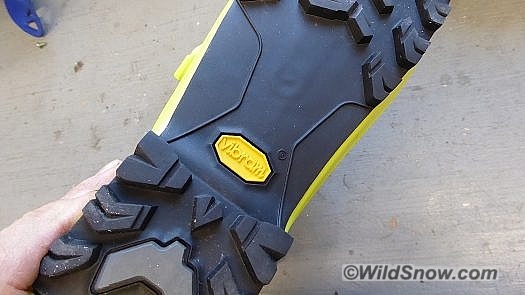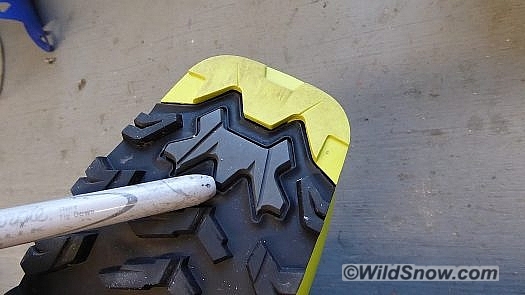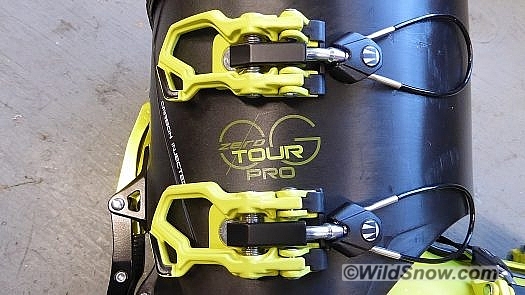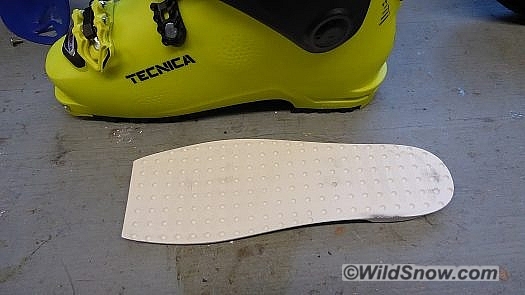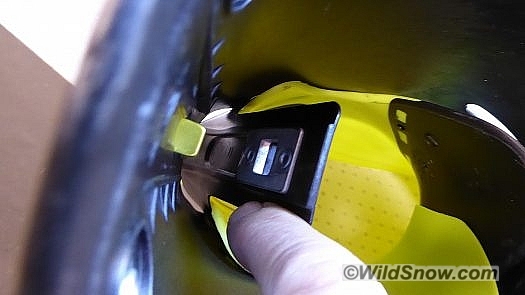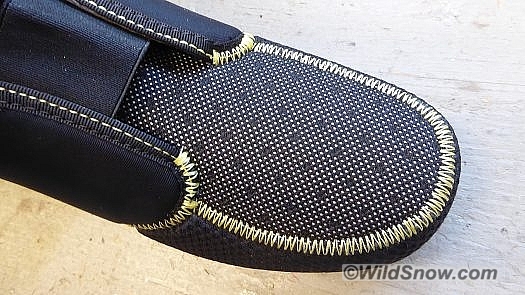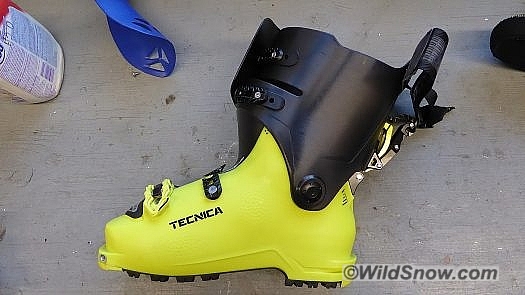Editor’s note from Lou: Last season, we liked the idea of Tecnica’s effort in their Zero G Guide Pro overlap cuff ski touring boot. Only we felt the boot to be a sophomore effort lacking in enough cuff travel to qualify as a “real” touring shoe, as well as being a bit on the heavy side in term of our expectations. We got some grief for our take from various Tecnica hyper-fans. It appears we also got to be right. This year’s version of the boot (available fall of 2018) has a vastly improved cuff flex range, a clearly better lean lock, drops the two piece swap sole (adds complexity and expense, doesn’t cover middle of boot sole), is lighter, and overall appears finished in terms of being something more than a nice yellow downhill boot with a lean lock and some rubber on the toe and heel. Our only real gripe is the awkward 4-word name, which we’ll play around with shortening so we don’t damage our wrist tendons. Below, one of our best gear testers takes the Zero Pro out for a spin. Looks like we have a winner.
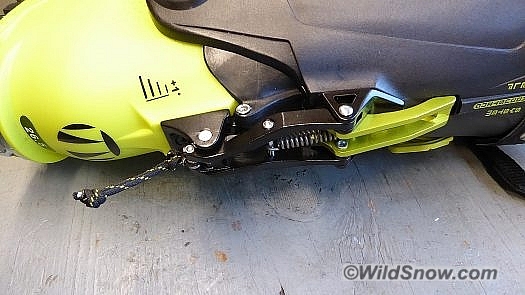
External lean lock has an interesting two-part anchoring configuration. Upper lock actually functions similar to the Dynafit Ultra Lock. This adds to the boot’s beef in downhill mode, only it has a bit of allowance for cuff flex. Note that retail versions will show a small change in the lean-lock fasteners.
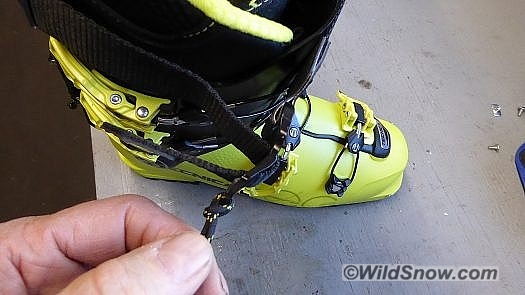
Aha, we’re finally seeing some movement with different brands improving their power straps, making transitions easier.
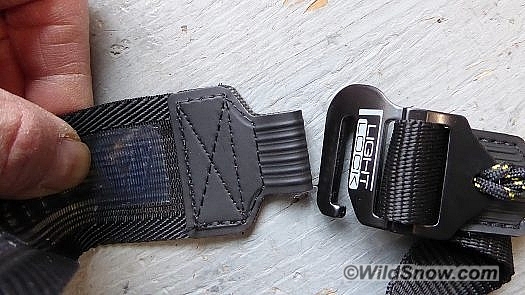
The ‘U buckle’ has become common in many applications, wonderful for a ski boot power strap. Incredibly easy to entirely release, and no hook-loop to tangle with your pant cuff.
Improvement from previous iterations:
– Greatly improved, webbing lock power strap (lighter, more effective, simple on and off).
– Better, easier to grasp with gloves lean lock (external parts instead of small internal).
– Better sole – complete “Vibram” type sole, instead of a sole block on the front and rear of boot, better traction, better durability.
– Better shell – simple, light approx 1340 grams instead of 1540 (we’re not sure this is apples to apples in terms of size, but it’s close), more cuff mobility, lower volume, less bulbous.
– Better buckles – simple, light, mostly out of the way, still has micro adjust, no finicky sliding touring latch on upper buckles
Features:
– The Zero Pro (note shortened name) is a simple, light, overlap cuff boot. No unnecessary BS here. Streamlined, looks like the designers took a page out of their alpine race/plug boots. Very “flat” boot board, almost took the ramp angle out of the Dynafit bindings I used as a test bed. I think they took a lot of the rocker out of the boot or made the heel very low profile to accomplish this, or played with the placement of the toe tech fittings. Lean-lock felt solid and looks to be easily adjustable for a more aggressive forward lean (two screws). The secondary upper locking mechanism is interesting in that it introduces another potential failure point, but perhaps enhances the downhill feel of the boot by anchoring the cuff at two different points.
Fit:
-Folks who like Tecnica (or probably Scarpa) fit will like the Zero G fit in any of the boot’s flavors (5 versions to be available, see below). I would guess that these are fairly easy to fit multiple foot shapes. They’re easily heat punched as well. As stock, the boots have a tight heel pocket yet are quite voluminous in the fore-foot, both in width and height. This seems to be a trend in modern boots, which perhaps makes the the boot fitter’s job easier. The catalog last width is 99, they feel wider. The arch was a bit high for me towards the heel but I bet a heat mold of the liners would easily remedy this. I noticed the shell cuff plastic easily deforms so owners will need to be diligent about buckling the boots and storing them properly when they are not in use.
Touring:
– Ok, this is the best overlap cuff range of motion I’ve ever tested (blew my “other brand” out of the water). I would say this is one of the biggest selling point of these boots. The pivot is relatively low friction and both forward and rearward motion are excellent. The boot’s upper cuff is taller than other touring boots out there. This could negatively effect touring with sidehilling or kick turns for a smaller skier, should be a bonus for bigger taller skiers. Some may like the heel hold shape, for others it could create a hot spot while touring and require some customization. I toured with the top buckles buckled on the loosest setting and then with the buckles open. Really good range of motion for an overlap cuff boot with the buckles opened. The ~1300 gram weight is impressive, only marginally heavier than my “light” touring boots.
Skiing
– Terrific lateral rigidity, reminiscent of an alpine boot. I would bet that the only difference is the lack of reinforcing plastic on the liner cuff. Forward flex is excellent and progressive just like an overlap cuff boot should be. I didn’t see deflection of the lower shell while flexing (perhaps due to the double lean lock, more on that below). I took it easy on the light skis Lou lent me for testing the boots, but I would say the forward flex is more like a “115” for whatever that is worth (note: it was a warm day). Personally would probably kick the adjustable forward lean into a steeper angle using the provided cuff adjustment as well as possible liner shimming, but would guess most WildSnow readers would like the more upright factory default.
Note the tech fittings are the Dynafit certified version, but are not the excellent Dynafit “Master Step” type that make binding entry easier. Thing is, the older style Dynafit fittings allow for more boot rubber and plastic between the ground and the steel of the fitting — if you dirt walk or rock scramble much in your ski boots, this could be a reason the older fittings are actually better. Once you get used to them, they’re nearly as easy for the clip in. But I like the Master Step fittings and would prefer them on this boot.
Gripes
– I think the small, simple buckles of the Zero G Tour Pro will be difficult to operate in cold snowy conditions. The buckles are good at catching the cable latch but also difficult to move around with a gloved hand. Small cables and catches could prove difficult for some.
-The two part lean lock seemed redundant and the upper (gold) piece of the lock seemed to catch the inter-shell intermittently in walk mode (I noticed this while walking around in the parking lot after skiing). I noticed Lou scratching his head over this configuration as well. More evaluation required and we are told a few small improvements will be made in the retail version (see more about this below).
– All buckles and misc parts are riveted to the boot so they’ll be difficult to repair if something breaks. I’m a fan of threaded fasteners, though I’m aware of the downsides (added assembly cost, possibility of loosening during use).
– The main cuff pivots are basic rivets, not threaded fasteners, thus difficult to repair or customize.
Overall
Zero G Tour Pro, good boot, more is less! Impressive weight, impressive range of motion. Overlap cuff. My gripes are minimal, mainly I’d like the upgraded Dynafit toe fittings, though the older style do allow for thicker sole material. Very simple and effective power strap. Stiff on the down. Good, simple, clean liner with flex bellows. Should fit multiple foot shapes. Light enough for a hut trip but still stiff enough to drive the big touring skis/sidecountry setup. Maybe the solution for long sidecountry days. I really liked the Vibram branded sole, nicely rockered, simple, low profile, seems it will hold up to abuse.
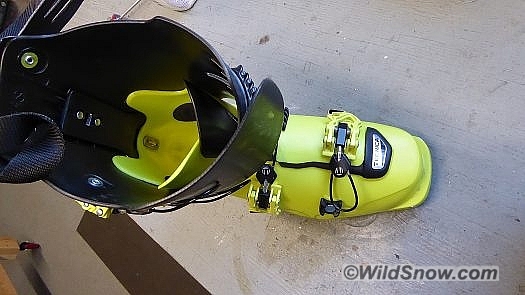
Overlap cuff isn’t a new concept in ski boots, but some things just work when done well, that’s the case here. Overlap can give you excellent flex in downhill mode and surprisingly good cuff mobility in touring mode.
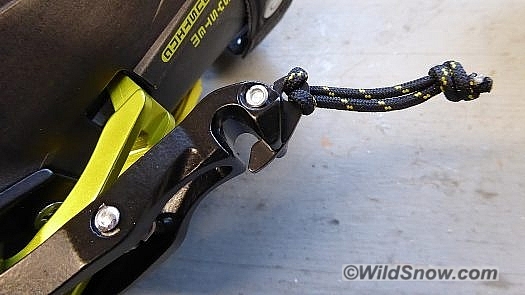
Lean lock includes the ‘secret hook’ we’ve seen at least one other brand using, and regard as a safety feature. We should mention that external lean locks are not the end-all solution to icing problems, but they make everything obvious and easy to clean if you do get some snow or ice wadded up and blocking your transition to downhill mode. The secret hook helps eliminate guesswork as to whether you’re really locked in or not.
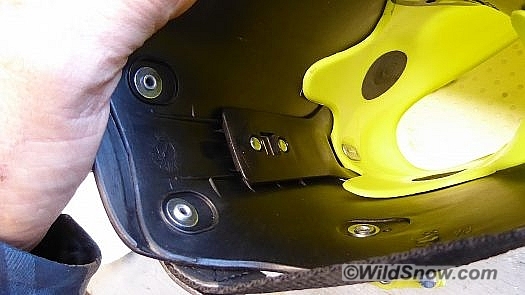
The lean lock has an upper and lower interface with the cuff, upper uses this ‘rear tongue’ similar to the Dynafit Ultralock. We’ve always liked this type of lock, but we’re not sure why Tecnica doubled down on their locking machinery. We spoke with Tecnica about this, they said having a lower and upper locking interface adds stiffness to the boot flex. In bench testing, this configuration does appear to reduce bulging of the lower shell during forward flex. Fine, so long as the added complexity doesn’t cause problems and the weight penalty is minimal. On first glance, we thought that perhaps the added second cuff lock would be a safety feature due to locking the cuff independent of the lower external hook-lock. That’s not the case, it’s an additional lock, only it allows for some flex of the cuff (presumably so it doesn’t make the boot too rigid, while at the same time having limited range. Again, the upper lock is similar to a Dynafit Ultra Lock (TLT 6, etc.), only it allows for some cuff movement.
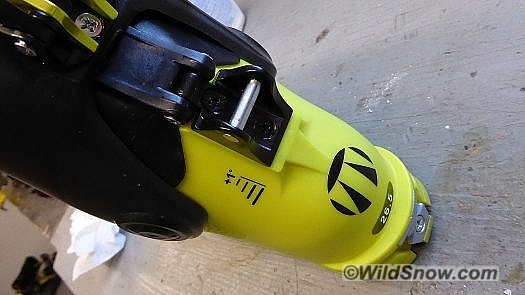
Zero Pro cuff lean angle is adjustable by one degree, to do so you remove a couple of screws and flip the bar mount. (Catalog specs forward lean at ’12, 13′ degrees.
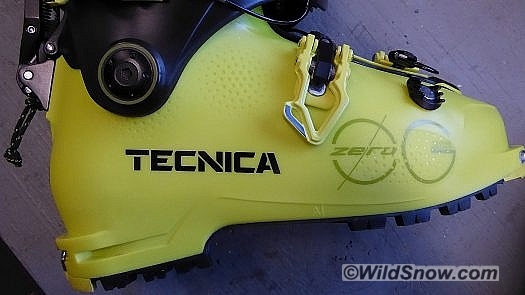
Tecnica Zero G Tour Pro, for 2018-2019. As with last season model, common shell punch areas have a stippled pattern that might make heat punching easier. Grilamid and PU are so easy to heat mold we see this more as a cosmetic than anything revolutionary. Perhaps it saves three grams per boot, and does look cool.
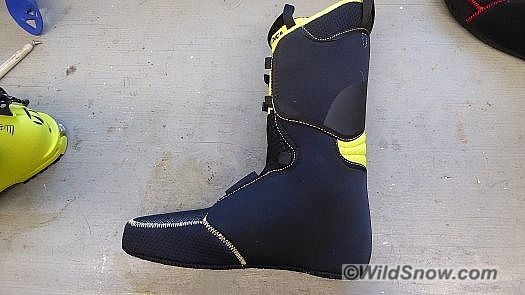
Liner is light, basic. We like basic. A fairly dense, heat moldable foam is used. We like dense. Minimal comfy gushy interior foam layer, to fake out ski shop customers trying on boots, absent. We like that to be absent.
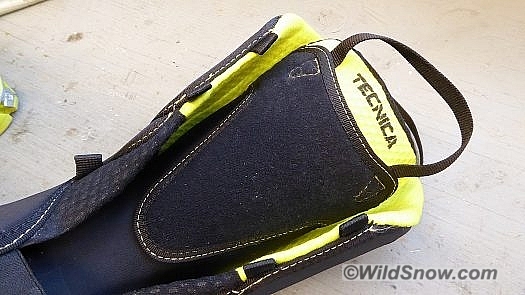
Minimal tongue and cuff stiffening is just right. This can be enhanced by a boot fitter, or swap in a custom liner of whatever flavor you desire.

Any boot worth walking in should have a flex bellows in the liner. You can improve this by grinding a few deeper slots or making gill slits with a razor blade, but the stock configuration works.
The numbers:
Tested size 26.5, measured sole length 300mm, 1340 grams per boot.
Forward cuff lean, adjustable 12 or 13 degrees.
Last, catalog 99 but we feel it’s wider.
Zero G ski boot series, versions to be available:
Tour Pro (unisex), reviewed here, carbon infused cuff etc.
Tour Scout (men’s and women’s versions), PU cuff.
Tour (men’s and women’s versions), PU shell, PP cuff, heavier less costly.
Tyler Christoff grew up ski racing. He raced at Syracuse University, making Nationals multiple years. A few years ago he moved to Aspen to pursue a different sort of skiing. Tyler has rapidly grown into a strong mountaineer, and has the perfect form that most skiers only dream of. He is one of our favorite ski testers since he hits backcountry skiing regularly.

